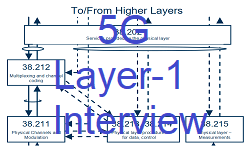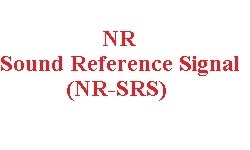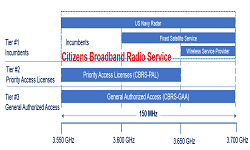How to choose an Antenna for your application ?
Choosing an antenna can be a difficult task, there are several parameters that need to be taken into consideration. Although It is important to examine several physical, electrical, and economical options to find the perfect antenna for a given application. While this post will shed light on many technical factors that need to be considered when choosing an antenna. Once type of application is fixed, one can get closer to optimal RF performance after considering these parameters.
Frequency range
A very convenient part of antenna design is that, once you know your application, you will then know which frequency band you will be working with.
Like below is the table of common frequencies used:
| WiFi | 2.4GHz and 5.8GHz |
| GPS | 1575.42 -1610 MHz |
| GSM Modem | 850, 900, 1800, 1900 Band |
The frequency that you will be working with will play a role in the size of antenna that your application will call for. Since higher frequencies have smaller wavelengths they can use much smaller antennas.
An example would be the ”2450AT43B100E” from Johanson Technology Inc. This antenna is 7 mm x 2 mm.
Here is the input return loss characteristics of this antenna, plot taken from datasheet.

As per thumb rule, antenna with return loss better that 10dB, is considered good. Here, in this example, marker m1 is at 2.38GHz where return loss better than 10dB. And marker m2 at 2.47 GHz where return loss is also better than 10dB. So this antenna works good from 2.38GHz to 2.47GHz and so it can handle WLAN, home RF, Bluetooth, and 802.11 b/g applications.
This small antenna can be used in embedded applications where hardware is also small.
Now imagine you are contracted to locate an antenna for a taxi company or municipal bus service that needs GPS capability in their vehicles so they can keep track of their fleet. This presents challenges that the previous design did not. Previously we were challenged by size restrictions, now we are not as limited by space, but challenged by the environment and noise. We will be looking to find a panel mounted antenna so that it can be attached to the vehicle, and since it will be outside it must have at least an IP67 rating. The MA650.ST.AB.003.DZ by Taoglas Limited is an example of an antenna that can provide this level of protection while meeting the frequency bands for cellular and location-based services. There are a couple of center frequencies for this antenna, the 1575.4 MHz band is used for GPS and the 1602 MHz band is used for GLONASS (Russian version of GPS). This has an IP69K which means that it is going to be able to resist dust and high temperature, high pressure washing.
Bandwidth
There are several different frequency range configurations in the antenna world. If you are looking for cellular coverage you will need a broad bandwidth. Many antennas, while having a wide overall bandwidth, will have smaller center bands. This is convenient for the engineer with the need for a multi-band solution. The FXUB70.A.07.C.001 from Taoglas Limited has a range from 698 MHz to 3 GHz and has six bands that it is designed to operate at. This may not be the best antenna for any given frequency, but it offers a broad range of usable frequencies in an economic and aesthetically pleasing package.
For example, you have one SON receiver chain in LTE BTS, and that SON receiver chain has to receive the signals from all neighbouring base stations (these neighbouring base stations may of other frequency bands), in that case you will be needing a broadband antenna.
Gain and Directivity
While antennas are passive devices, they still have gain. This term is not used the same way that it would be with a amplifier or any kind of active device, rather, this is a ratio that corresponds to the directivity of the antenna. There are several other ways to measure gain in an antenna, dBi is one of the major categories, this could also be expressed in dB, in which case 10 dB would be 10 times the energy in relation to an isotropic antenna. Another example would be dBd, which is in relationship to a dipole antenna. An isotropic antenna radiates power evenly in all directions. While this is an ideal antenna, it does not exist; it is used as a reference to measure the gain of other antennas by comparison. The reason that some antennas have more gain than others is because they are directional and have more power transmitted in a given direction than an isotropic antenna would. A good example of an antenna that has a very directional radiation pattern is a dish antenna. While the gain is high and the range is long, this is only going to be functional if the antenna is pointed at what it is trying to communicate with.
So, is high gain a good thing? The honest answer is it depends upon the application. If you are using a directional antenna, then yes, it is.
In designing a device, antenna placement can be a key to success, especially if you are using a very directional antenna like a dish. If you are using a device like a cellular telephone that needs to search out several cell towers in different directions, then having a higher gain may not matter because you will not be permanently directing your antenna at anything. Specifications of gain found on a product’s datasheet will only show what the antenna is capable of. It will ultimately be the design of the circuit which will determine the gain in the real world.
Impedance
Since an antenna is one component in an entire circuit, we need to think of how it will interact with the rest of the design. Antennas are meant to radiate electromagnetic waves into free space, and to do so efficiently we will want maximum power transfer. This means we will want to have a termination on our antenna that has the same impedance as the transmission line. While this is well known in the RF world, and most antennas today will call for a 50 Ohm termination.
Connector Type
There are some insights that may help in picking the best connector for your antenna. If you are dealing with an antenna that will need an actual coaxial connector on it, once you know the impedance requirements you will still have a vast list of possible connectors that could work. If possible, picking a more popular connector style may be prudent. Many walkie-talkies will use SMA or RP-SMA connectors, and many mobile devices will use UHF connectors, many Wi-Fi modules will use U.FL connectors.

If you have some prototype RF hardware development board, check the connector type mounted at the output and look for the antenna with similler connector type.
Power Handling Capability
A trend exists towards increasing the transmitted power level in HF systems. This trend is not entirely unjustified in view of the usage of multichannel or multimode transmission; the overall power capability of the transmission system must be sufficient to allow adequate power levels per channel. Another reason for operating at high power levels is to increase reliability, particularly in an emergency situation. Aside from cost, the main detraction from high power operation is the problem of interference; improvements in radiation pattern characteristics and in frequency management has, however, alleviated this situation.
Like anything in electronics, it all boils down to what the application calls for.
Sometimes a custom antenna is the best solution.



